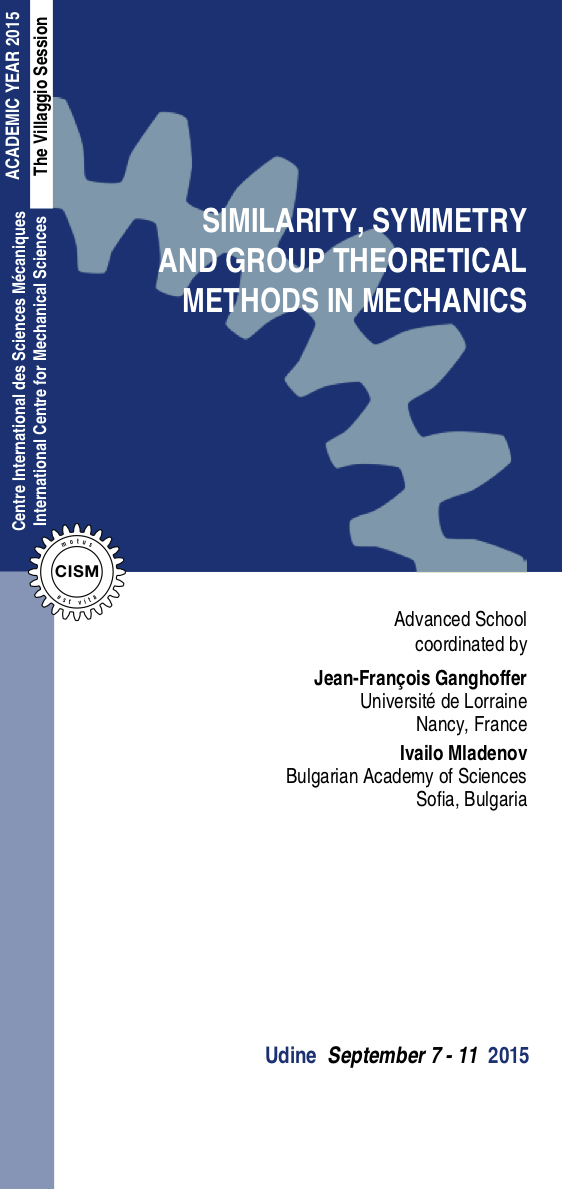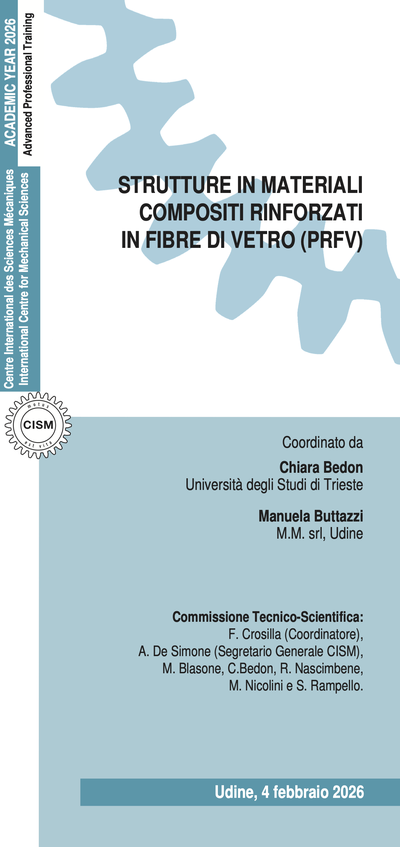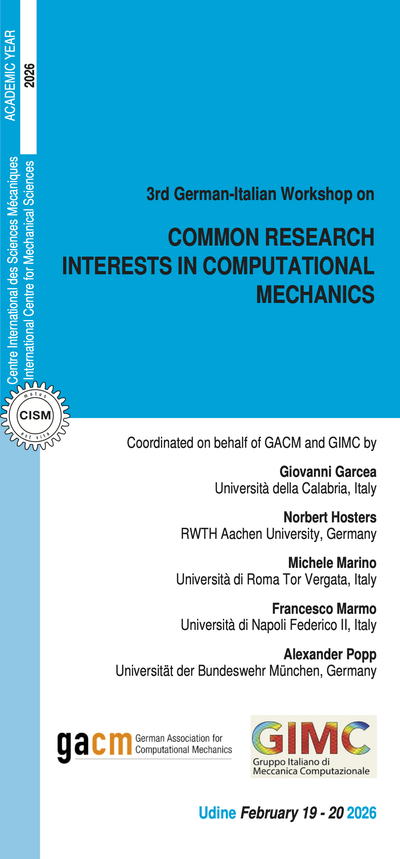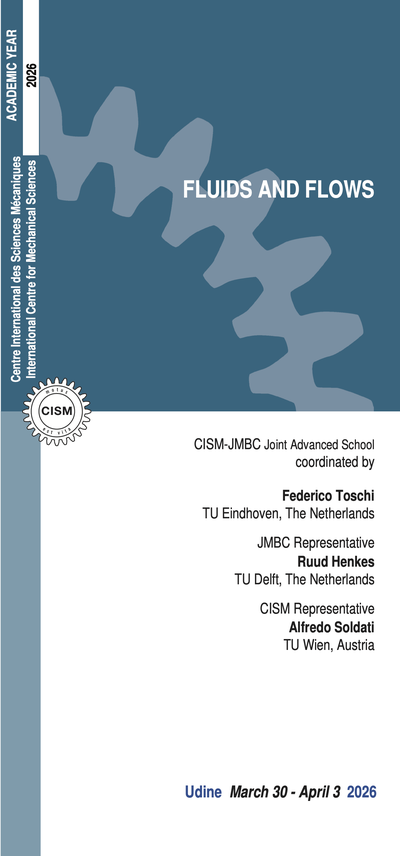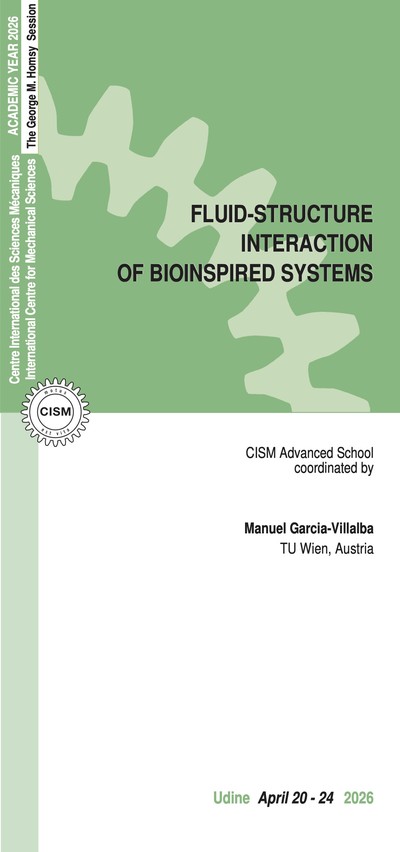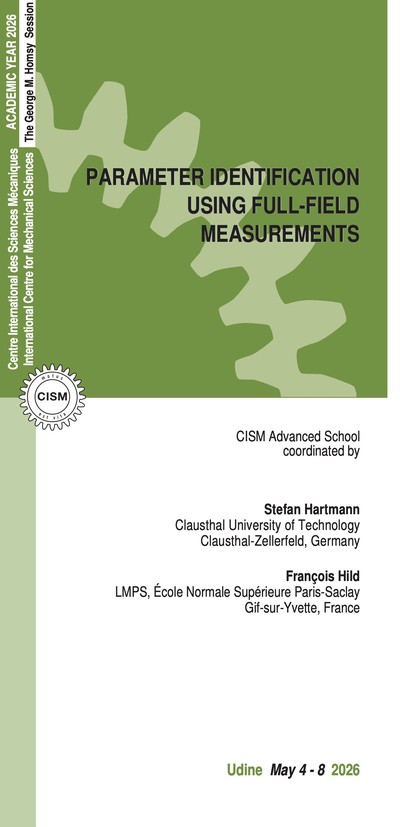The aim of the course is to bring together researchers in mechanics, applied physics and applied mathematics who use similarity and symmetry analysis of engineering problems in both solid and fluid mechanics, researchers who are developing significant extensions of these methods implement, and numerical analysts who develop and use such methods in numerical schemes. The powerfulness of the Lie group symmetry analysis has been extensively utilized, essentially to support the finding of analytic solutions to partial differential equations. For a given DE problem, one can algorithmically calculate its admitted point symmetries – transformations of dependent and independent variables that map a problem intoItself. Knowledge of admitted symmetries allows one to construct mappings relating DE systems, find out whether or not a given nonlinear DE system can be mapped into a linear system by an invertible transformation, and find exact (group-invariant or symmetrygenerated) solutions. Lie group analysis is of further interest in setting up numerical schemes preserving the group properties of an initial boundary value problem (BVP). Symmetries have been historically relied upon to construct Lagrangian formulations in field theory. In the context of continuum solids mechanics, Lie groups have been applied to solve the Navier and the Lame equations, or, in a similar spirit and extending this view to dissipation, to partially solve the ideal plasticity equation, to formulate conservation laws and invariance relations, to analyze the kinematics of mechanisms, and more recently to formulate the constitutive laws and master response of materials with complex rheological behaviors. Symmetry methods have a fundamental role in Lagrangian mechanics, Eshelbian mechanics, and nonlinear elasticity. The field of Eshelbian Mechanics (so called in the honor of the works of Eshelby, but also known as Configurational Mechanics), relies on translational symmetries in the material space, for writing field equations in terms of Eshelby stresses. Those symmetries extended to rotations and dilatations have been intensively used to construct the well known J-integrals. The concept of nonlocal symmetries allows to construct novel BVP in continuum mechanics (and group invariant solutions), involving potential variables, thereby extending the classical picture relying on the traditional Lagrangian and Eulerian viewpoints. Symmetry methods are at the basis of methodologies for finding invariance relations of the BVP of continua obeying non dissipative and dissipative behaviors, including nonlinear elasticity, plasticity and creep. Lie symmetries are useful to find conservation laws in the analysis of Euler and Navier-Stokes equations for incompressible fluids: this particularly includes very recent results on new vorticity related conservation laws for Euler and Navier-Stokes equations and others which only exist in reduced dimensions such for as for plan or helically symmetric flows. The three “complete approaches” to statistical turbulence theory are an immediate consequence of Navier-Stokes equations. Beside the classical Lie symmetries stemming from Navier- Stokes equations, these sets of equations admit more Lie symmetries, named statistical symmetries. The involvement of Lie groups as a new predictive and systematic methodology to obtain invariance properties of materials is more recent. From the knowledge of the constitutive law of a given material, Lie symmetries are able to predict its response under various control conditions, and inversely to formulate a material’s constitutive law exploiting a postulated Lie group structure satisfying the symmetries involved in the experimental data. The proposed course will reflect the organization of the Summer School on the same topics that took place in Varna, Bulgaria (June 7-12, 2013), jointly organized by I. Mladenov and J.F. Ganghoffer. Those topics were dealt with by three main speakers, leaders in the field, who made a pedagogical introduction and laid out key issues and concepts: G. Bluman (UBC, Vancouver, Canada), N. Ibragimov (Blekinge Institute of Technology, Karlskrona University, Sweden), and C-M. Marle (Univ. Pierre et Marie Curie and French Academy of Sciences, Paris). Two of these lecturers will deliver courses during the CISM session. The course is mostly intended for Master students in mechanics or applied mathematics (or in physics, but having a sufficiently good level in mechanics, defined by the prerequisites), for PHD students, post-doctoral students, industrial researchers and engineers interested in the more practical use of symmetry methods. Permanent researchers willing to get an overview of the field are also welcome.
G. Bluman, A. Cheviakov, S. Anco. Applications of Symmetry Methods to Partial Differential Equations, Appl. Math. Sci. vol. 168, Springer, New York 2010, 417pp. G. Bluman, A. Cheviakov, J.F. Ganghoffer. ‘Nonlocally related PDE systems for one-dimensional nonlinear elastodynamics’. Int. J. Engng Math. 2008. DOI 10.1007/s10665-008-9221-7. V. Magnenet, R. Rahouadj, J.F. Ganghoffer, C. Cunat. Continuous symmetries and constitutive laws of thermo-elasto(visco)plastic materials within a thermodynamical framework of relaxation. Part I: formal aspects. Int. J. Plasticity, 23, Issue 1, 2007, 87-113. A. Cheviakov, J.F. Ganghoffer. Symmetry Properties of Two- Dimensional Ciarlet-Mooney-Rivlin Constitutive Models in Nonlinear Elastodynamics. Journal of Mathematical Analysis and Applications. 2012. 396, 625–639. J.F. Ganghoffer, V. Magnenet, R. Rahouadj. Relevance of symmetry methods in mechanics of materials. Int. J. Engng Math., 66, 103-119, 2010. I. Mladenov, New Solutions of the Shape Equation, Eur. Phys. J. B 29, 327-330, 2002. A. Müller, J. Rico: Mobility and Higher Order Local Analysis of the Mechanisms, in: J. Lenarcic, P. Wenger (eds.), Advances in Robot Kinematics, 2008, Springer, pp. 215-224. A. Müller: On the Manifold Property of the Set of Singularities of Kinematic Mappings: Modeling, Classification, and Genericity, ASME Trans., Journal of Mechanisms and Robotics, vol. 3, 2011. J.J. Slawianowski. Geometry of Phase Spaces. Wiley & Sons, 1991. J. J. Slawianowski. The Mechanics of the Homogeneously Deformable Body. Dynamical Models with High Symmetries. Zeitschrift für angewandte Mathematik und Mechanik 62: 229 – 240, 2006. doi:10.1002/ zamm.19820620604. V. Vassilev, I.M. Mladenov, Geometric Symmetry Groups, Conservation Laws and Group-Invariant Solutions of the Willmore Equation, Geometry, Integrability and Quantization 5, 246-265, 2004.
George Bluman (University of British Columbia, Vancouver, Canada)
6 lectures on: These five lectures will give an overview of recent developments by George Bluman and his collaborators in the field of symmetries anddifferential equations. •General introduction giving an extensive overview of topics to be covered. •Review of local symmetries - point, contact, higher-order. •Construction of conservation laws (CLs) - direct method to find them, connections with Noether’s theorem. •Use of symmetries to construct new conservation laws from known CLs. •How to systematically find trees of equivalent but nonlocally related PDE systems for a given PDE system through the use of CLs, point symmetries and subsystems. •How to systematically find nonlocal symmetries and nonlocal conservation laws for a given PDE system. •The multidimensional situation. •All topics will be illustrated through numerous examples.Jean-François Ganghoffer (Université de Lorraine, Nancy, France)
6 lectures on: Symmetry methods in continuum solid mechanics of materials. •Symmetries in the Lagrangian formulation of field theories. •Symmetries in continuum solid mechanics (nonlinear elasticity). •Invariance relations in nonlinear elasticity, path independent integrals. •Eshelbian mechanics. •Applications of Lie symmetries in elastoviscoplasticity: construction of invariance relations and master responses.Ivailo Mladenov (Bulgarian Academy of Sciences, Sofia, Bulgaria)
5 lectures on: The Many Faces of Elastica. •Geometrical background. •Intrinsic equations. •Symmetries. The generalized elastica. •Membrane shapes, Hele-Shaw cells. •Explicit solutions of the shape equation.Andreas Müller (Shanghai Jiao Tong University Joint Institute, China)
6 lectures on: Group Theoretical Approaches to the Mobility and Singularities of Mechanisms. •Analytic varieties and mobility concepts. •Non-smooth kinematic phenomena. •Higher-order local analysis. •Generic statements. •Open problems and alternative routes.Martin Oberlack (Technical University, Darmstadt, Germany)
6 lectures on: Symmetry Methods in Fluid Mechanics and Turbulence Theory. •Symmetries of Euler and Navier-Stokes equations in 3D. •Conservation laws of Euler and Navier-Stokes equations in 3D. •Symmetries and conservation laws of Euler and Navier-Stokes equations in reduced dimensions. •The three fundamental statistical approaches to turbulence: Lundgren-Monin-Novikov pdf equations, the Friedmann-Keller moment equations and the Hopf functional equation. •Counterpart of classical symmetries of Euler and Navier- Stokes for turbulence statistics. •New statistical symmetries of turbulence with no classical counterpart. •Symmetry invariant solutions as turbulent scaling laws derived from classical and new statistical symmetries.Jan J. Slawianowski (University of Warsaw, Poland)
6 lectures on: Mechanical Systems with Affine and Unitary Degrees of Freedom. •Hamiltonian and quantum systems on Lie groups and homogeneous spaces. •Rigid body and affinely-rigid body. •Affinely-invariant dynamics of affinely-rigid body. •Micromorphic mechanics and its affine generalization. •Born-Infeld theory and the mechanics of shells. •D’Alembert and Vakonomic variational principles.